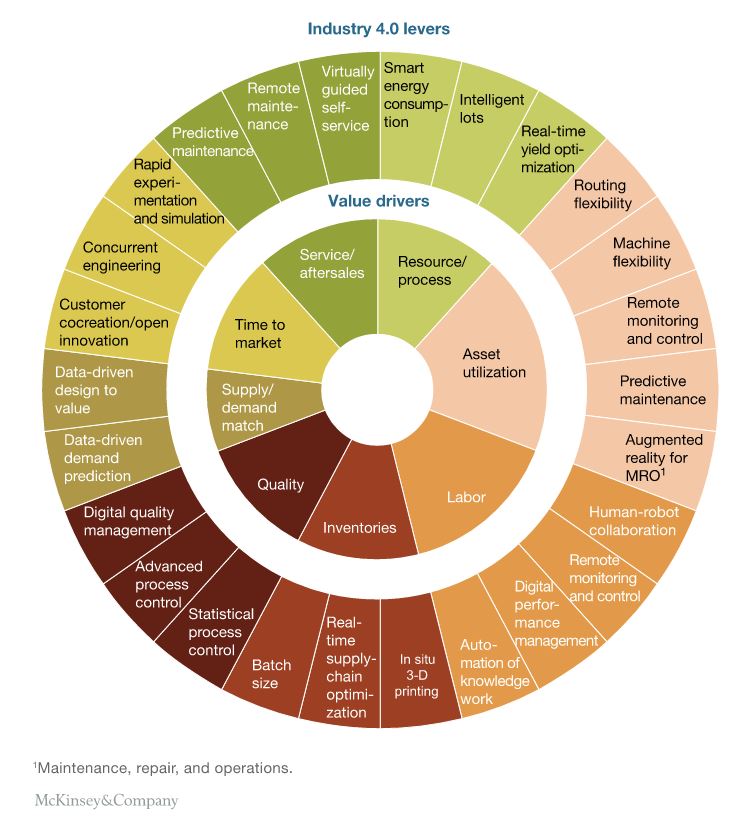Ready or Not: Here Comes Industry 4.0 in Manufacturing
There’s been a lot of buzz among manufacturers about Industry 4.0— but what exactly is it? According to McKinsey & Company, it is the digitization of manufacturing—and manufacturers aren’t ready. When 300 manufacturing leaders were surveyed last year, only 48 percent said they were prepared for the digital transformation. At the same time, they recognized the sobering reality that 40 to 50 percent of their manufacturing equipment would have to be upgraded or replaced in order to keep pace with the rapid change.

So, what’s holding manufacturers back? It could be that they want to avoid the high cost of upgrading, or it could be that they just don’t understand the complexities. A new McKinsey paper may help explain how varied facets of digitization are connected to each other, and how to strategically leverage them. The digitization of manufacturing, as McKinsey sees it, has four dimensions:
- Big data, along with rapidly expanding computing power and connectivity
- New methods and tools for rapidly analyzing the data and turning it into actionable business-intelligence
- Changing human-machine interfaces and tools based on virtual reality
- Continued advances in translating digital instructions to physical action, as seen in technologies like 3D printing and computer-controlled machining, metal forming, food production, and other processes
How does Industry 4.0 impact manufacturers?
Big data from machine sensors in the leaching processes in a gold mining operation showed that oxygen levels were fluctuating. By using this new information to make changes, yield was increased by 3.7 percent, for savings of up to $20 million a year.
Analytics applied to data from an automaker’s order configuration process found that customers were willing to pay more for some options while other features were relatively unimportant. The company was able to use that insight to reduce the millions of possible option combinations to thousands. The simplification was felt in development time, manufacturing costs, and supply chain complexity. McKinsey said that companies can grow gross margin 30 percent within two years by applying new digital analytics tools.
The system interface for stock pickers at one company was changed to a headset with augmented reality visual display and an attached camera. Without being encumbered by handheld devices, they could scan item codes faster and handle goods with two hands, improving productivity.
Using data to construct physical products can combine a crowdsourced digital design with 3D printing to both make a product faster and eliminate shipping throughout the supply chain. UPS is adding this capability to some retail locations – making them small “manufacturing” facilities.
These examples by themselves are just isolated cases of digitization in manufacturing. The true potential of Industry 4.0 won’t be realized, however, unless a company elevates it to the strategic level. McKinsey has developed a wheels-within-wheels vision combining eight value drivers and 26 levers. The challenge for the manufacturer is to integrate them into a plan that fits the organization.
The value drivers and the levers are:

By looking at the organization from the perspective of each of these value drivers, manufacturers may be able to formulate a comprehensive digital strategy, and choose the optimal tools for advancing to the next level. And to make the leap, manufacturers need managers and employees who can understand the new digital landscape. That means it’s time to send their teams to conferences and trade shows where they can learn how the newest technologies could benefit the company.
Karen Wilhelm has worked in the manufacturing industry for 25 years, and blogs at Lean Reflections, which has been named as one of the top ten lean blogs on the web.
- Category:
- Industry
- Manufacturing
Some opinions expressed in this article may be those of a contributing author and not necessarily Gray.